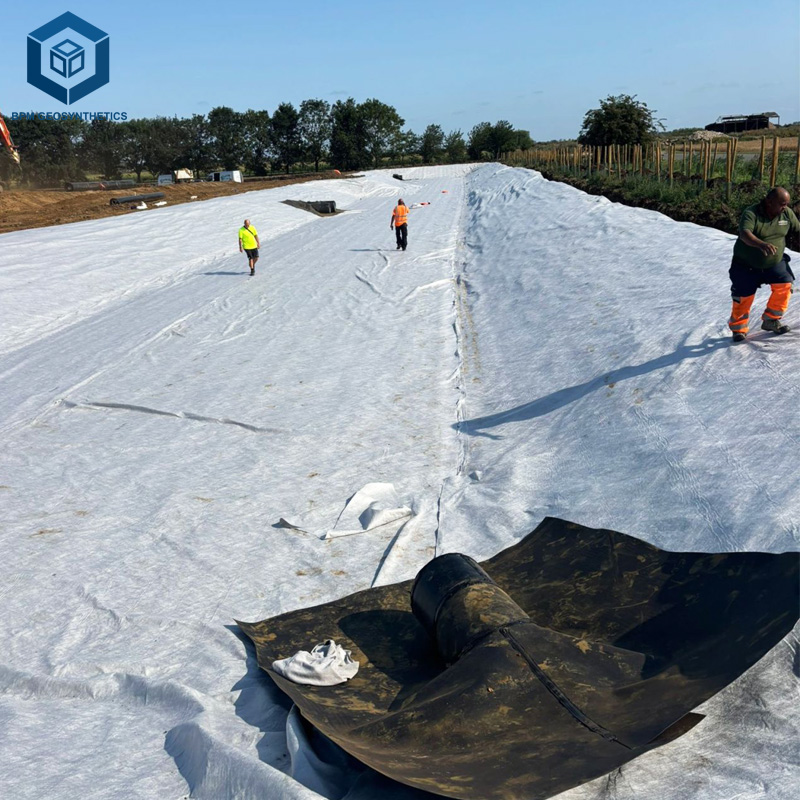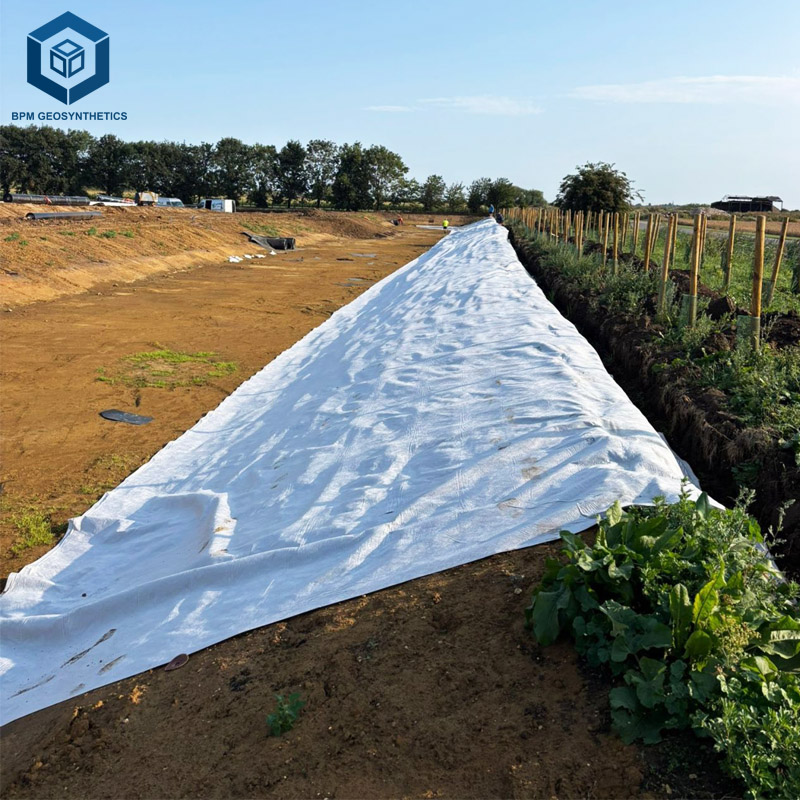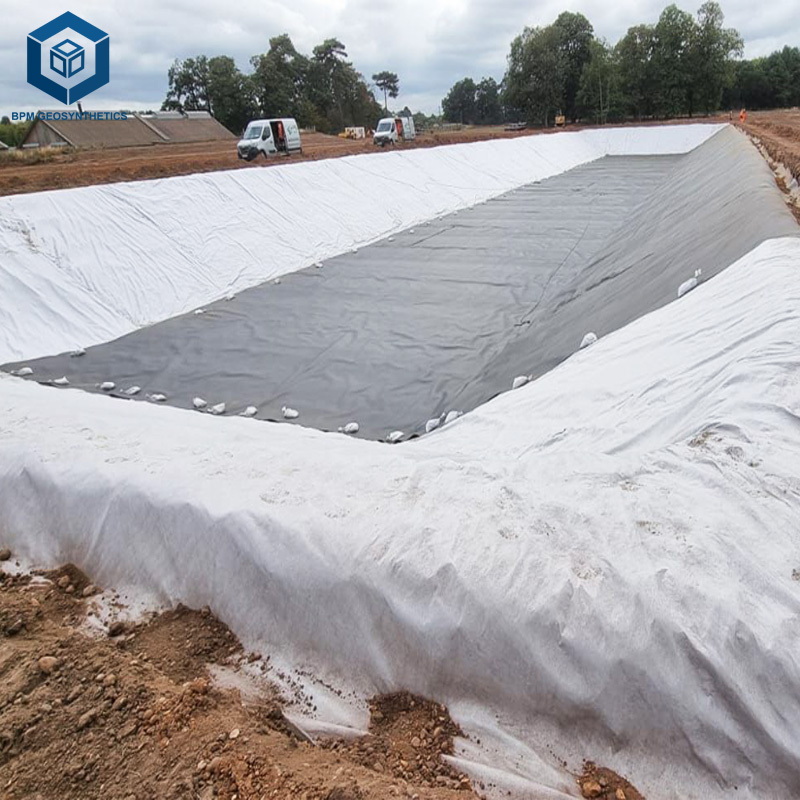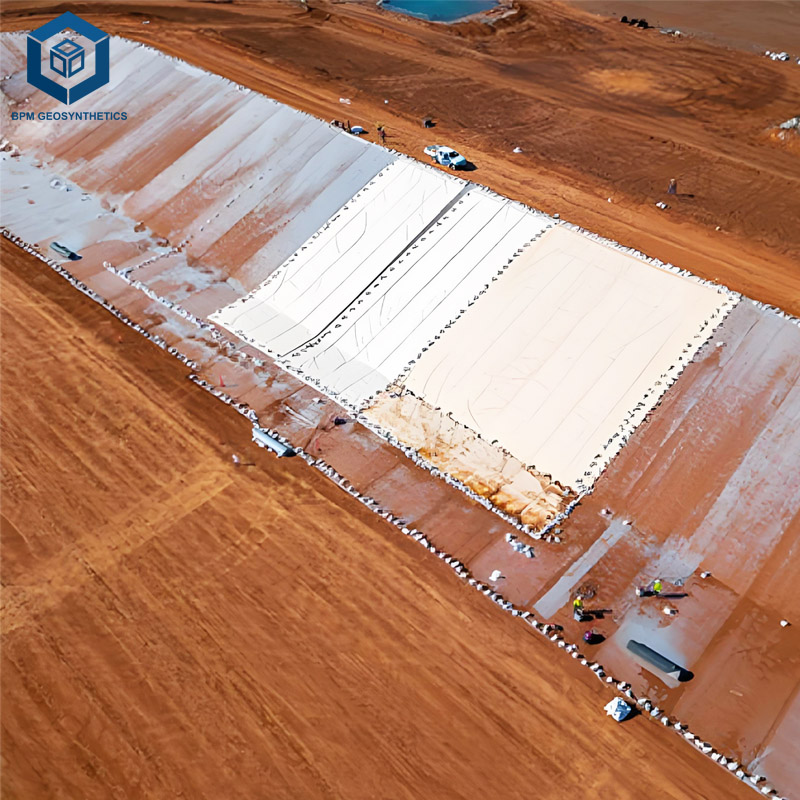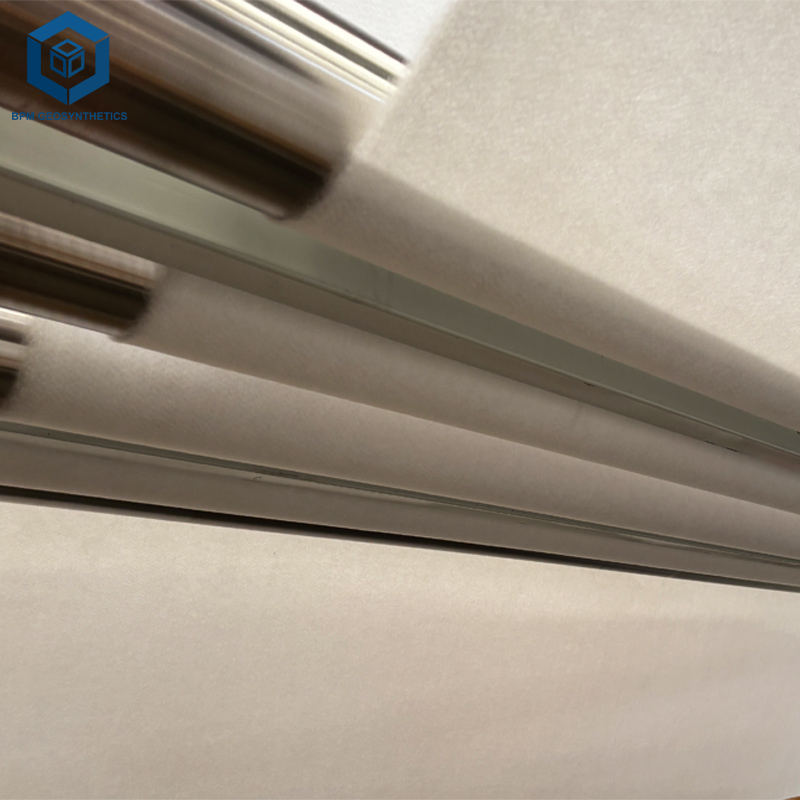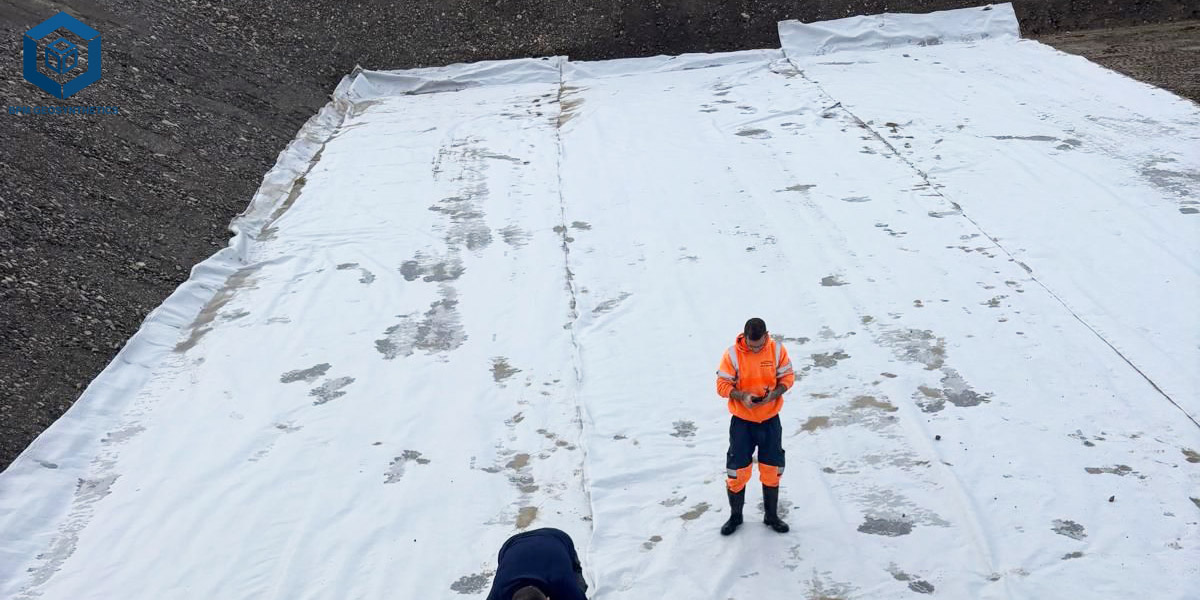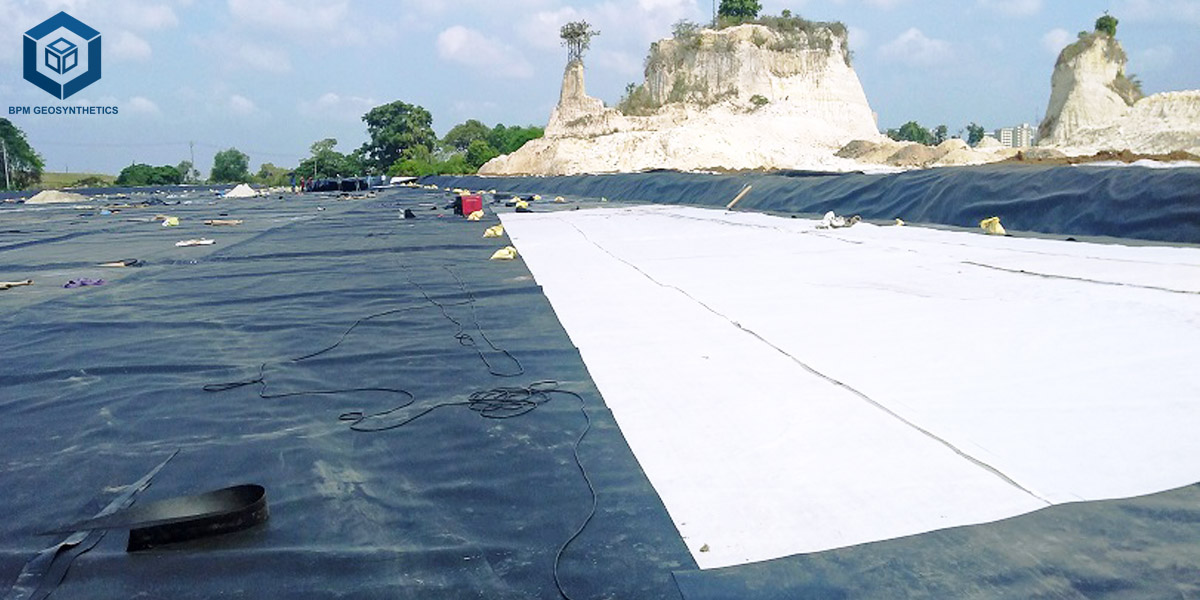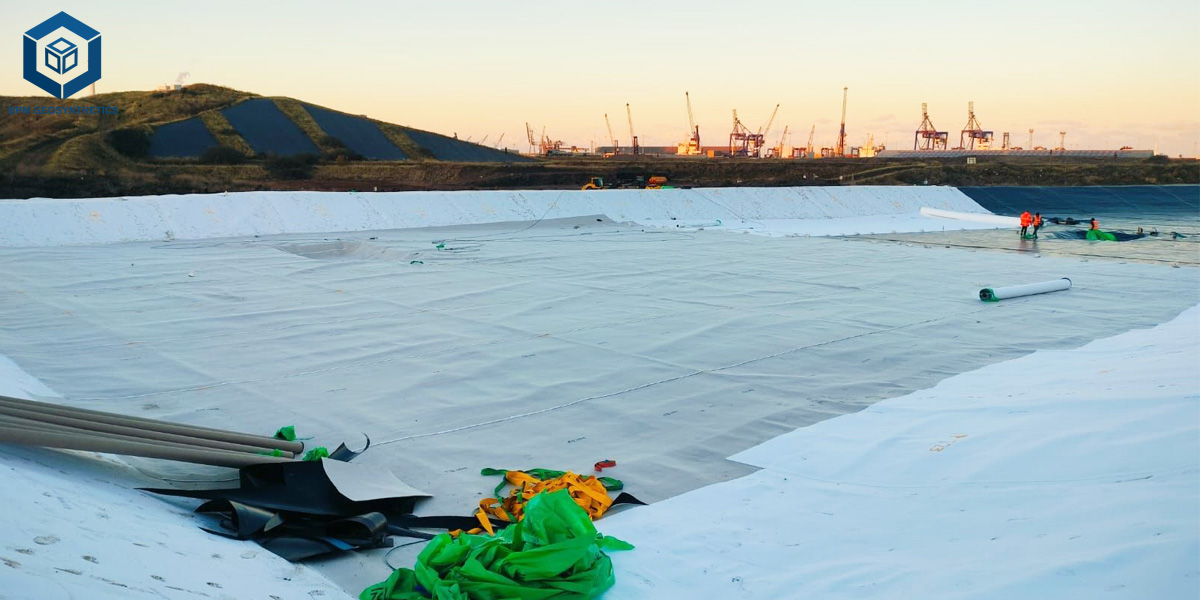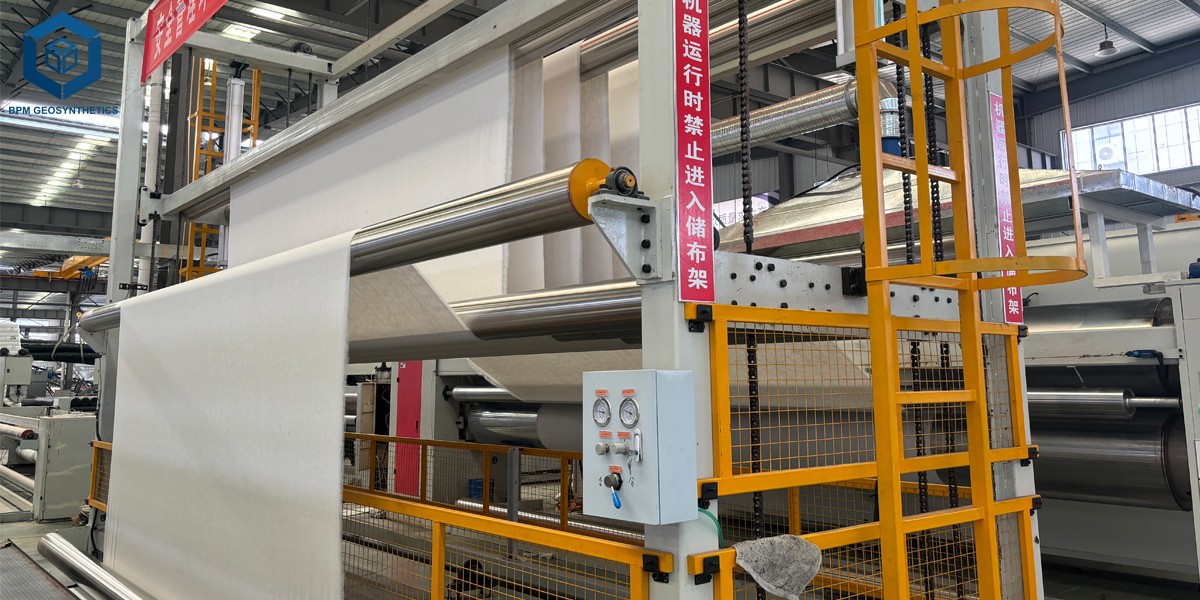Geotextile Soil Stabilization
Geotextile soil stabilization is high-performance geosynthetic fabrics designed to reinforce, separate, and protect soil structures in civil engineering, construction, and landscaping projects. By improving load distribution and preventing soil mixing, these geotextiles enhance the durability and stability of roads, embankments, slopes, and other soil-based structures.
- High Tensile Strength: Reinforces weak soil to prevent rutting, settlement, or deformation.
- Durable and UV-Resistant: Resistant to sunlight, chemicals, and biological degradation for long-term performance.
- Separation and Filtration: Maintains soil structure while allowing proper water drainage and preventing clogging.
- Weight: 100–1000 g/m² (customizable)
- Roll Width: 1–7 meters (can be customized)
- Color: Black, white, or custom color on request
- Technical Consultation: Installation guidance, site assessment, and engineering support.
Geotextile soil stabilization is advanced geosynthetic fabrics engineered to reinforce, separate, and protect soil structures in civil engineering, infrastructure, and landscaping projects. They enhance soil strength, prevent erosion, control filtration, and improve load distribution. By using geotextile fabric, weak soils are stabilized, subgrade rutting is minimized, and the lifespan of roads, embankments, slopes, and other soil-based structures is significantly extended.
These products are available in woven and non-woven fabrics, tailored to different engineering needs. Woven geotextiles offer high tensile strength for reinforcement, while nonwoven geotextiles provide excellent filtration and drainage capabilities.
1. Geotextile Soil Stabilization Key Features and Benefits
1.1 High Tensile Strength
Reinforces weak or soft soils, providing extra support to prevent settlement, rutting, and deformation even under heavy vehicular or construction loads. Ideal for improving the structural integrity of roads, embankments, and other soil-based foundations.
1.2 Durable and UV-Resistant
Fabric geotextile offers long-lasting resistance to sunlight, chemicals, biological degradation, and harsh environmental conditions, ensuring that the geotextile cloth maintains its strength and functionality over time. Perfect for both exposed and buried applications.
1.3 Separation and Filtration
Non woven geotextile fabric effectively maintains proper soil layer separation while allowing water to drain efficiently. This prevents soil mixing, reduces erosion, and avoids clogging, ensuring stable drainage and healthier soil structures.
1.4 Flexible and Easy to Install
Lightweight roll-form geo fabric can be easily handled, cut, and deployed over uneven or irregular terrains. Non woven geotextile is flexibility makes installation faster and reduces labor costs while conforming to site contours.
1.5 Environmental Safety
Made from non-toxic polypropylene (PP) or polyester (PET) fibers, these non woven landscape fabric is environmentally safe and fully compatible with surrounding soil and water ecosystems, minimizing ecological impact.
1.6 Long-Term Performance
Provides reliable soil stabilization for 15–25 years, depending on site conditions, load intensity, and maintenance, making it a durable, cost-effective solution for civil engineering and landscaping projects.
2. Geotextile Soil Stabilization Product Specifications
Material: Polypropylene (PP) or Polyester (PET)
Weight: 100–1000 g/m² (customizable based on project needs)
Roll Width: 1–7 meters (custom widths available)
Roll Length: 50–100 meters (can be customized)
UV Resistance: >500 hours (enhanced UV-resistant versions available)
Color Options: Black, white, or custom colors upon request
Customizable Properties: Reinforced, double-layer, or specialized geotextiles for heavy-load areas
3. Geotextile Soil Stabilization Customization Services
3.1 Custom Dimensions:
BPM Geosynthetics provides adjustable width, length, GSM (weight), and roll sizes to fit specific engineering designs. This ensures the geofabric matches site constraints, installation methods, and performance requirements for both small and large-scale projects.
3.2 Reinforced or Heavy-Duty Fabrics:
Options include high-strength, reinforced, or thickened geotextiles engineered for demanding applications such as highways, load platforms, railways, and soft soil foundations. These upgraded geotextile drainage fabric improve stability and extend service life in high-stress environments.
3.3 OEM/Branding Services:
We offer private label manufacturing, including customized logos, labels, colors, and packaging. Ideal for distributors, wholesalers, and project contractors who require consistent brand presentation and market differentiation.
3.4 Technical Support:
Our engineering team provides expert consultation for material selection, design recommendations, and installation methods. Support includes project evaluation, sample testing guidance, and on-site application advice to ensure optimal performance and cost efficiency.
4. Geotextile Soil Stabilization Installation Guidelines
4.1 Site Preparation:
Remove all the vegetation, rocks, and construction waste, then level the ground to provide a stable working surface. In case the soil is soft or not suitable, take it out by excavation and put proper backfill instead to provide uniform support for the geotextile.
4.2 Laying the Geotextile:
Roll out the film geotextile gently over the prepared surface letting it lie flat and without folds or wrinkles. Overlap the adjacent rolls by 300–600 mm, and in the case of weak or saturated soils, it is better to use wider overlaps in order to ensure the continuous reinforcement.
4.3 Edge Fixation:
Fix the geo cloth edges by metal stakes, plastic pins, or anchor trenches depending on readily available materials and the condition of the site. If the geo textile material is properly fixed it will not shift when backfill is placed or under construction traffic.
4.4 Backfill and Compaction:
Put compatible backfill materials—like graded aggregates or clean soil—straight on the geotextile drainage. Do the spreading material with care so that it doesn't tear, then go through the layers with your compaction machine to obtain the required density, thus ensuring stabilization for a long time.
4.5 Inspection:
Look for tears, punctures, wrinkles, and misalignments during and after installation. Replace any damaged sections right away by installing patches of the same material with sufficient overlap in order to regain performance fidelity.
5. Maintenance and Longevity
5.1 Inspection on a regular basis
Exposed or partially exposed areas of a geotextile filter cloth should be inspected from time to time to check for signs of UV degradation, clogging, or any kind of physical damage. This should be done especially after heavy rainfall or construction activity.
5.2 Repair on time
In case there is damage, the local area should be fixed using a corresponding type of geotextile filter fabric. Make sure there is enough overlap with the surrounding material to be able to continue reinforcement, filtration, and separation functions of the material.
5.3 Condition Checking
Slope stability, drainage flow, and backfill material condition should be monitored regularly. Keeping an eye on these aspects will serve as a guarantee that the geo fabric cloth will still be able to provide reliable soil reinforcement throughout its service life.
6. Geotextile Soil Stabilization – Q&A
Q1: How does the geotextile change the soil so that it performs?
A: Geo fabric material strengthen the support structure with the additive of tensile reinforcement, separate different soil layers effectively, and receive water for filtration in a controlled manner. By decreasing rutting, settlement, erosion, and deformation, this process leads to a stronger and more durable soil structure.
Q2: What kind of geotextiles is prepared for soil stabilization?
A: Both types of Woven Geotextiles and Non Woven Geotextiles are frequently utilized.
- Woven geotextiles provide a very high tensile strength and therefore, are perfect for reinforcement and load-bearings application.
- Non woven geotextiles ensure good filtration and drainage capabilities, and are therefore, ideal for separation, protection, and soil improvement.
Q3: How do I pick the correct geotextile for my work?
A: The choice of a nonwoven geotextile fabric depends on the soil conditions, the load that needs to be sustained, the projects design, and the service life expected. Normally, engineers look at the parameters of tensile strength, elongation, permeability, puncture resistance, and fabric weight (GSM) when making their decision. technical assistance from BPM experts can be very helpful and is available on-site evaluation basis.
Q4: How long will geotextile soil stabilization remain effective?
A: Generally, quality geotextile fabric near me is a great investment in terms of their service life because it is typically 30-50 years but the actual period depends on conditions like the soil, UV exposure, load intensity, and installation quality. Their lifespan can go beyond that if they are covered properly.
Q5: What kind of maintenance is necessary after the installation?
A: The maintenance required is very little. Periodic checks should verify the presence of erosion, drainage performance, or damage caused by external activities. Closures of any torn areas can be done by the use of corresponding geotextile fabric under gravel material with the appropriate overlap.
Q6: Where can geotextile soil stabilization products be found?
A: Examples are the construction of roads, driveways, soft soil reinforcement, slopes, embankments, retaining structures, railways, drainage systems, landscaping, and other infrastructure or environmental engineering projects.
7. Choose BPM Geosynthetics
BPM Geosynthetics provides premium woven and non-woven geotextiles that meet ASTM and ISO standards for quality and durability. By combining high-performance materials, customizable solutions, and professional technical support, BPM Geosynthetics ensures that your soil stabilization projects are efficient, safe, and long-lasting.
Benefits of Choosing BPM Geosynthetics :
Proven performance in civil engineering, infrastructure, and landscaping projects
High-quality materials with UV and chemical resistance
Full customization and OEM options
Expert installation guidance and after-sales support
Conclusion
Geotextile Soil Stabilization is one of the most effective methods to solve issues related to the soil and it is used widely to earthworks in civil engineering to reinforce the soil that is weak, improve the distribution of the load and increase the durability of the structures. Geotextiles made from the latest fibers and technologies have enough strength in tension, apart an excellent separation and filtration performances, they are also very resistant in the long run against UV radiation, chemicals, and atmospheric stress, thus are able to provide a stable base for roads, embankments, slopes, and construction platforms. Geotextile landscape fabric is designed to be installed quickly, perform well over time, and thus, they cut down on the area of the maintenance and the risk of the construction.
When a project is demanding a constant level of quality and special technical requirements, The Best Project Material Co., Ltd.(BPM Geosynthetics)can provide you premium woven and non woven geotextiles along with technical support, customized dimensions of geotextiles, and reinforced options— thus soil stabilization solutions that one can rely on anywhere in the world.
